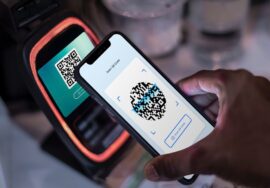
Traffic in Philippines, how to deal with it?
Traffic in the Philippines is one of the most challenging problems that Filipinos face on a daily basis. From morning rush hours to afternoon traffic jams, Filipinos struggle with the congested roads and the long hours they spend on their daily commute. I am also trying to calm myself everything I go to the work, luckily, my work schedule is Australian Time and I don’t usually travel during peak or rush ours. However, there are several ways to deal with traffic in the Philippines, and in this blog, we will discuss some of the most effective ways to cope with this problem.
Plan ahead and leave early
One of the most effective ways to deal with traffic in the Philippines is to plan ahead and leave early. If you know that there is going to be heavy traffic on your route, you can plan to leave earlier than usual to give yourself enough time to reach your destination without being late. You can also use traffic monitoring apps such as Waze or Google Maps to check for traffic updates and to find alternative routes to avoid congested roads.
Carpool or take public transportation
Another way to deal with traffic in the Philippines is to carpool or take public transportation. By sharing a ride with someone else, you can reduce the number of cars on the road, which can help to ease traffic congestion. Public transportation, such as buses and trains, also provide an efficient and cost-effective way to travel, especially during rush hour.
Practice defensive driving
Defensive driving is another effective way to deal with traffic in the Philippines. Defensive driving involves being aware of your surroundings, anticipating the actions of other drivers, and avoiding aggressive driving behaviors. By practicing defensive driving, you can reduce the risk of accidents and prevent further traffic congestion.
Avoid peak hours
Peak hours are the times of the day when traffic congestion is at its highest. These usually occur during the morning and afternoon rush hours, as well as during the lunchtime rush. If possible, you should try to avoid traveling during these times by adjusting your schedule accordingly. For example, you can arrange to have a flexible work schedule that allows you to come in earlier or later than usual.
Stay calm and patient
Dealing with traffic in the Philippines can be frustrating and stressful, but it is important to remain calm and patient. Getting angry and frustrated can lead to aggressive driving behaviors, which can further worsen traffic congestion and increase the risk of accidents. Instead, try to relax and listen to music, a podcast, or an audiobook to help you stay calm and focused on the road.
Stay informed about traffic updates
Staying informed about traffic updates can help you to plan your route and avoid congested roads. You can check traffic updates on social media or on traffic monitoring apps such as Waze or Google Maps. You can also listen to traffic reports on the radio or TV to stay up-to-date with the latest traffic news.
Be mindful of the environment
Finally, it is important to be mindful of the environment when dealing with traffic in the Philippines. Heavy traffic can contribute to air pollution and increase carbon emissions, which can have a negative impact on the environment. By using public transportation or carpooling, you can help to reduce your carbon footprint and protect the environment.
In conclusion, traffic in the Philippines is a major challenge that requires patience, planning, and a bit of creativity to overcome. By following these tips, you can minimize the impact of traffic on your daily commute and reduce the stress and frustration that come with it. Remember to stay calm, stay informed, and stay focused on the road to ensure a safe and stress-free driving experience.








